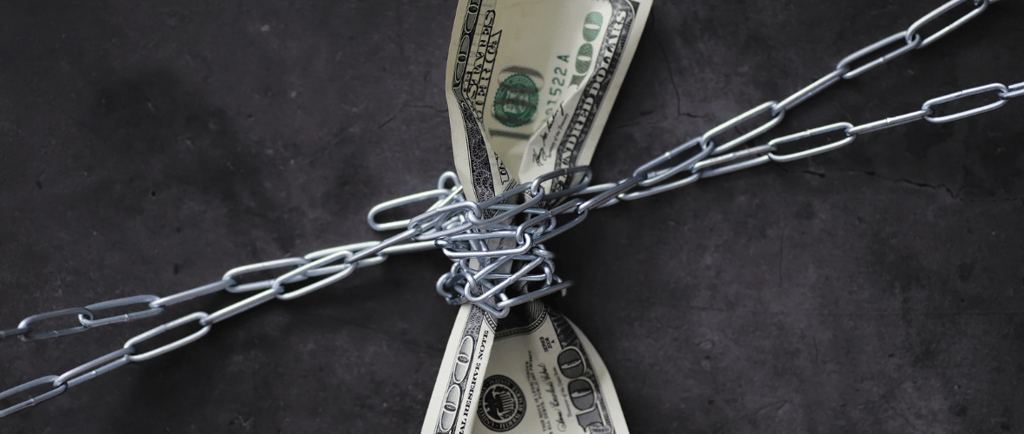Understanding Depreciation and Its Impact on Your Financials
Depreciation is a critical accounting concept that many business owners encounter but may not fully understand. It directly impacts your financial statements, tax obligations, and overall profitability. While it may seem like just another number in your books, depreciation represents the gradual loss of value in your assets over time and can provide important insights into your business's financial health.


Understanding Depreciation and Its Impact on Your Financials
Depreciation is a key accounting concept that plays a significant role in shaping your business’s financial health. While it may seem complex at first, understanding how depreciation works and how it affects your financial statements can help you make better financial decisions and provide valuable insights into your company’s true value and profitability.
In this blog post, we’ll break down what depreciation is, the various methods used to calculate it, and how it impacts your business’s financials.
What Is Depreciation?
Depreciation refers to the gradual reduction in the value of a tangible asset over its useful life. When businesses invest in physical assets like machinery, vehicles, equipment, or buildings, these assets don’t retain their full value indefinitely. Instead, they wear out or become obsolete over time. Depreciation allows businesses to allocate the cost of these assets over their estimated useful life, aligning the expense with the revenue generated by those assets.
Depreciation is a non-cash expense, meaning no cash is directly paid out for it during each accounting period. However, it appears on the income statement and impacts your net income.
Key examples of depreciable assets include:
Buildings
Office equipment (computers, printers, furniture)
Vehicles
Manufacturing equipment
Why Is Depreciation Important?
Depreciation helps businesses better match expenses with revenue. By spreading the cost of an asset over multiple periods, it provides a more accurate picture of your company’s financial health and performance. Without depreciation, businesses might record large expenses when purchasing equipment or property, which would result in misleading financial reports.
Here’s why depreciation matters:
Accurate Profit Measurement: Depreciation allows you to account for the wear and tear of an asset over time, so your financial statements better reflect the actual cost of doing business.
Tax Deductions: Businesses can deduct depreciation expenses from their taxable income, reducing the overall tax liability.
Better Financial Planning: Knowing how your assets depreciate helps in budgeting for future expenses and replacement costs.
Methods of Depreciation Calculation
There are several methods for calculating depreciation, and the one you choose can significantly affect your financial statements. Each method spreads the cost of the asset differently over its useful life. Let's explore the most common methods:
a) Straight-Line Depreciation
This is the simplest and most commonly used method. With straight-line depreciation, the asset’s cost is spread evenly across its useful life.
Formula:
Annual Depreciation Expense=Asset Cost−Salvage ValueUseful Life\text{Annual Depreciation Expense} = \frac{\text{Asset Cost} - \text{Salvage Value}}{\text{Useful Life}}Annual Depreciation Expense=Useful LifeAsset Cost−Salvage Value
Example: If you purchase equipment for $10,000 with a salvage value of $1,000 and an estimated useful life of 5 years, the annual depreciation expense would be: 10,000−1,0005=1,800 per year\frac{10,000 - 1,000}{5} = 1,800 \text{ per year}510,000−1,000=1,800 per year
b) Declining Balance Depreciation
This method accelerates depreciation, meaning more expense is recognized in the earlier years of an asset’s life. The most common version is the double declining balance method.
Formula:
Depreciation Expense=2×Book ValueUseful Life\text{Depreciation Expense} = 2 \times \frac{\text{Book Value}}{\text{Useful Life}}Depreciation Expense=2×Useful LifeBook Value
Example: If the same $10,000 asset has a useful life of 5 years, the first year’s depreciation would be: 2×10,0005=4,000 for the first year2 \times \frac{10,000}{5} = 4,000 \text{ for the first year}2×510,000=4,000 for the first year In subsequent years, the depreciation expense is calculated using the reduced book value.
c) Units of Production Depreciation
This method ties depreciation to the usage of the asset. It’s commonly used for manufacturing equipment where depreciation is based on units produced or hours worked.
Formula:
Depreciation per Unit=Asset Cost−Salvage ValueTotal Expected Units Produced\text{Depreciation per Unit} = \frac{\text{Asset Cost} - \text{Salvage Value}}{\text{Total Expected Units Produced}}Depreciation per Unit=Total Expected Units ProducedAsset Cost−Salvage Value
Example: If a machine is expected to produce 100,000 units over its life and costs $10,000 with a salvage value of $1,000, the depreciation per unit is: 10,000−1,000100,000=0.09 per unit\frac{10,000 - 1,000}{100,000} = 0.09 \text{ per unit}100,00010,000−1,000=0.09 per unit
d) Sum-of-the-Years' Digits Depreciation
This is another accelerated depreciation method where more depreciation expense is recognized in the early years of the asset’s life.
Formula:
Depreciation Expense=Remaining Life of AssetSum of the Years×(Asset Cost - Salvage Value)\text{Depreciation Expense} = \frac{\text{Remaining Life of Asset}}{\text{Sum of the Years}} \times \text{(Asset Cost - Salvage Value)}Depreciation Expense=Sum of the YearsRemaining Life of Asset×(Asset Cost - Salvage Value)
Example: For a 5-year asset, the sum of the years would be:
5+4+3+2+1=155 + 4 + 3 + 2 + 1 = 155+4+3+2+1=15
In the first year, you would depreciate:
515×(Asset Cost - Salvage Value)\frac{5}{15} \times \text{(Asset Cost - Salvage Value)}155×(Asset Cost - Salvage Value)
How Depreciation Impacts Financial Statements
Depreciation affects three key financial statements: the income statement, the balance sheet, and the cash flow statement. Let’s explore how depreciation impacts each:
a) Income Statement
Depreciation is recorded as an operating expense, reducing your net income. Although depreciation doesn’t involve an actual cash outflow, it impacts your reported profitability. By spreading the cost of assets over time, it ensures expenses are aligned with the revenue those assets generate.
b) Balance Sheet
Depreciation reduces the value of assets on the balance sheet over time. Each year, accumulated depreciation is subtracted from the asset’s original cost to show its book value. This reduction helps reflect a more realistic view of the current worth of long-term assets.
c) Cash Flow Statement
Since depreciation is a non-cash expense, it does not directly impact cash flow. However, when calculating operating cash flow, depreciation is added back to net income, as it does not involve actual cash movement. Depreciation affects your tax liability, which can indirectly influence your cash flow.
Tax Implications of Depreciation
Depreciation can provide significant tax benefits. The depreciation expense is deductible from your taxable income, reducing the overall tax burden. In the U.S., the IRS allows businesses to use several methods of depreciation for tax purposes, including MACRS (Modified Accelerated Cost Recovery System), which accelerates the depreciation deduction and allows for greater tax savings in the earlier years of an asset's life.
Additionally, businesses may qualify for Section 179 deductions, which allow you to deduct the full cost of qualifying assets in the year they are purchased, up to a certain limit. Bonus depreciation is also available, allowing businesses to deduct a significant portion of an asset’s cost in the first year.
Understanding which depreciation method works best for your business can help optimize your tax strategy.
How to Manage Depreciation in Your Business
To effectively manage depreciation and its impact on your financials, consider the following:
Asset Tracking: Keep a detailed record of all your assets, including purchase costs, estimated useful lives, and salvage values.
Choose the Right Depreciation Method: Select the depreciation method that best fits the nature of the asset and your financial goals.
Review Financial Statements Regularly: Regularly analyze how depreciation is affecting your profitability and asset values.
Work with a Professional: Consult with a tax advisor or accountant to ensure you’re maximizing your tax benefits and accurately reflecting depreciation in your financials.
Understanding depreciation is crucial for maintaining accurate financial records, optimizing tax deductions, and making informed decisions about future investments. By grasping how depreciation affects your financial statements, you’ll gain deeper insights into your business’s overall financial health. Whether you’re planning for growth, evaluating profitability, or preparing for tax season, properly managing depreciation is a key component of long-term success.








